This article is part of a two-part series on navigating pressing or critical issues using logic trees and the right framework. Part II of this series discusses tips for identifying the ideal framework that works best for you.
At a Glance
- When choosing a framework for building a logic tree, choose a framework that best fits the nature of the problem at hand, taking into account the data available and the desired outcomes.
- Effective business problem solving requires flexibility in the choice of frameworks, and in scenarios where you cannot apply a generic framework to your existing problem, it may be best to create a logic tree using your own custom framework, or a modification of one of the generic frameworks.
- Developing a logic tree is only half of the business transformation journey, as successful implementation depends on the sustainable adoption of new practices, and therefore, behavioural and cultural change methodologies come into play that will determine the success of the transformation.
In Part I of this series, we discussed what a logic tree is and explored some of the frameworks that serve as a systematic guide to building a comprehensive tree. To recap, we listed four frameworks – qualitative, process, segmentation, and conceptual – that can improve the effectiveness of logic trees.
The next question is: how do you identify the framework that works best for you? This depends on factors such as the nature of the problem, the data available, and the desired outcomes.
The obvious answer, of course, is to choose the framework that most closely matches the nature of the problem or goal at hand. For example, if the goal is to improve Return on Equity (ROE), a logical starting point is to structure a comprehensive logic tree around the ROE formula: ROE = Profit Margin x Asset Turnover x Financial Leverage.
Although frameworks are valuable tools, it is important not to blindly assume that the chosen framework is correct. Using different frameworks for the same question can lead to different conclusions. Therefore, a thoughtful and analytical approach is needed to validate and cross-reference findings from different frameworks.
Effective problem solving in business requires flexibility in the choice of appropriate frameworks. When faced with unproductive results from one framework, consider switching to a different approach to gain a fresh perspective. For example, when analysing a company with stagnating profits, switching from a profitability framework to a conceptual framework, such as the 3Cs (Customers, Company, Competition) can provide a broader perspective on potential factors of stagnation.
Maintaining this flexibility extends to the ability to switch frameworks midway through the logic tree itself. For example, starting with the 3Cs framework and then branching out to segmentation at a later stage allows you to explore different facets of the problem in more detail. This dynamic approach ensures that decision-makers can adapt their strategy as they gain new insights.
No suitable framework? Create your own
When problems resist fitting into generic frameworks, it is like trying to force a square peg into a round hole. Instead, consider customising a framework – tailored from a generic one – to build a logic tree that truly addresses your unique challenges.
To build a logic tree, start by outlining the main problems to address – this will be the trunk of the tree. Next, identify the smaller issues that contribute to this main problem. These will form the first set of branches. These branches can be organised by stakeholders, segments, processes, or numerical data.
For each of these branches, look closely to identify factors that influence them, which can be further divided into similar categories, creating more branches for in-depth analysis. Once the tree has been constructed, review it to ensure that it accurately captures the whole problem. The tree should be MECE (Mutually Exclusive, Collectively Exhaustive). This means that the branches should not overlap and together, they should cover every aspect of the problem.

Is your company culture sabotaging the organisation?

The Rising Need for Transformation in Manufacturing
Ready for a change in your organisation?
Blueprint, behaviour, buy-in: All contribute to business transformation
At first glance, logic trees and frameworks may seem like overly complex tools for everyday business decisions. But dig beneath the surface, and you will find some hidden gems. Think of them as your secret weapons for strategic thinking, business insight, and effective problem solving. Their benefits are powerful, especially when used skilfully.
Both logic trees and frameworks help to eliminate your ‘blind spots’, revealing connections and dependencies that you might otherwise have missed. Logic trees and frameworks foster a collaborative environment that allows everyone to contribute their perspectives and expertise. This leads to greater buy-in from all stakeholders. They also make decision-making processes transparent, building trust among colleagues, customers, and stakeholders.
Logic trees and frameworks, such as decision matrices, and SWOT analyses have inherent value, but their effective use requires more than just awareness. This is where the involvement of a specialist consultancy such as Renoir Consulting can prove invaluable. Our consultants are the architects of logic, the engineers of frameworks, and they know the nuances and hidden pitfalls.
However, developing solutions is only half the journey. Successful implementation depends on the sustainable adoption of new practices. This is where behavioural and cultural change methodologies come into play. Our team of change management experts will analyse the opportunities within your organisation and work with you to design a practical programme to implement sustainable solutions.
We begin by fostering stakeholder buy-in through initial handholding, and our consultants remain actively involved throughout the project. This ongoing engagement strengthens employee understanding and drives adoption of the new system, ensuring lasting success.
Start your business transformation today











